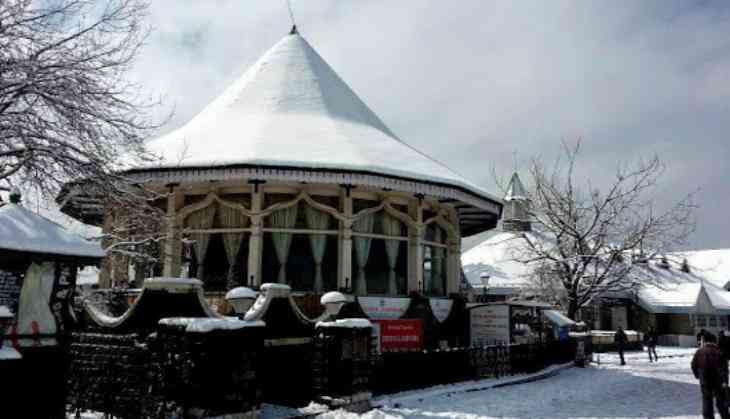What survival of iconic restaurant Ashiana means to Shimla

Any pictorial collection of Shimla is incomplete without a panoramic view of the Ridge and the iconic Ashiana Restaurant along with a Goofa Bar and Restaurant in the basement. On Thursday, this restaurant made headlines as it is after a 13 year old legal battle that the Himachal Pradesh Tourism Development Corporation (HPTDC) has retained the right to operate these two prime properties.
It is the Supreme Court that has paved the way after setting aside the Himachal Pradesh High Court orders of 2005 on leasing them out. The judgment of the apex court is not only a slap on the face of those who are out to lease out and privatise everything but also a reminder that certain things have immense cultural and emotional values that cannot be leased out for revenue.
There is a strong point that in the neo-liberal era the government has no business running hotels and restaurants and this poses a major question mark on the very existence of the tourism development corporations of various states as well as the Centre. But in places like Himachal Pradesh where tourists as well as the locals come to such places for unwinding and connecting with each other at affordable costs, the governments do have a role to play in developing tourism under a stipulated policy.
The place has come to be known as an institution over the years where students, journalists, bureaucrats, tourists and even politicians turn up almost on daily basis enjoying the bright sun during the day, the cool evening breeze or the warm confines when it is chilly. The place hosts press briefings, debates and small chit chats, thus preserving a culture of a bygone era that has been gormandized by the fast food chains, particularly global ones, that are abhorred by residents of the countries to which they belong but are loved by the sections of the Indian society that loves to show off and act snobbish.
Old timers recall that Ashiana was built in 1981 on the historic band stand of the British era . While the playing of the band had stopped with the departure of the British, the Band Stand had become a part of local park till the time it was decided to covert it into a restaurant.
Ashiana is famous for its open space and the scenic view as one can see the mists cover and uncover the Jakhu Hill on one side and look at the panoramic view of the mountains on the other. If nothing else one can simply gaze at the activities on the ridge that can be as mundane as school children moving around and tourists enjoying pony rides.
It was in 2005 that the state High Court in its two orders had reportedly directed the Shimla Municipal Corporation (SMC) to invite bids from interested parties for giving the property on lease or license basis.
Reports say that a bench of Chief Justice Dipak Misra and Justice AM Khanwilkar has stated that the High Court order of May 24, 2005, 'transcends beyond the relief claimed by the writ petitioner and more so, is a mandatory order passed at an interlocutory stage without recording any just and tangible reasons'.
The apex court has said that the issue of outstanding dues payable by the HPTDC to the SMC could be resolved with the intervention of the state. It has also directed the SMC to refund the earnest money of Rs 10 lakh deposited by the highest bidder in the court directed tender process.
Sources said that the state government had been compelled to have a rethink on the move to lease out this property and the former chief minister Virbhadra Singh had shown wisdom in the matter. What followed was a long legal battle but meanwhile Virbhadra had managed to get a stay from the Supreme Court thus keeping the place alive.
Shimla is one of the few tourist places that partially retain the old world charm of the British era. Ashiana is one of those places that epitomises this culture. One cannot even dream of having a literary discussion in any of the fast food joints that have started dotting the Mall Road. Here one can establish a direct rapport with the staff, sit at ease and spend some quality time doing whatever one wants.
Ashiana continues to stands as something different in the tempest of change that has pervaded the tourism culture in the hills.
While the quantity of tourists has definitely increased, the quality has not. What one gets to see now is mostly loud and brash lots giving two hoots to the civic sense which the hills have always commanded. Such crowds can never understand what spending quality time is all about as their very first question on getting down is only about the multinational coffee an eatery chains that have gained popularity over the last two decades.
It is the same when it comes to shopping The manner in which national and international brands have been gobbling up the Mall Road is a matter of concern because the ethnic touch and feel of the place has started disappearing. The joke during the summers is that the Mall Road gets converted into an air conditioned market of Delhi or any other city in the plains where the tourists have every possibility of running into their neighbours.
The distinct charm of Shimla – the Queen of the Hills is gradually missing. It is in this context that Ashiana's survival in its traditional avatar assumes significance. One can only hope that the politicians and bureaucrats take a lesson and do not attempt to destroy cultural spaces in cities, definitely not in the hills.


